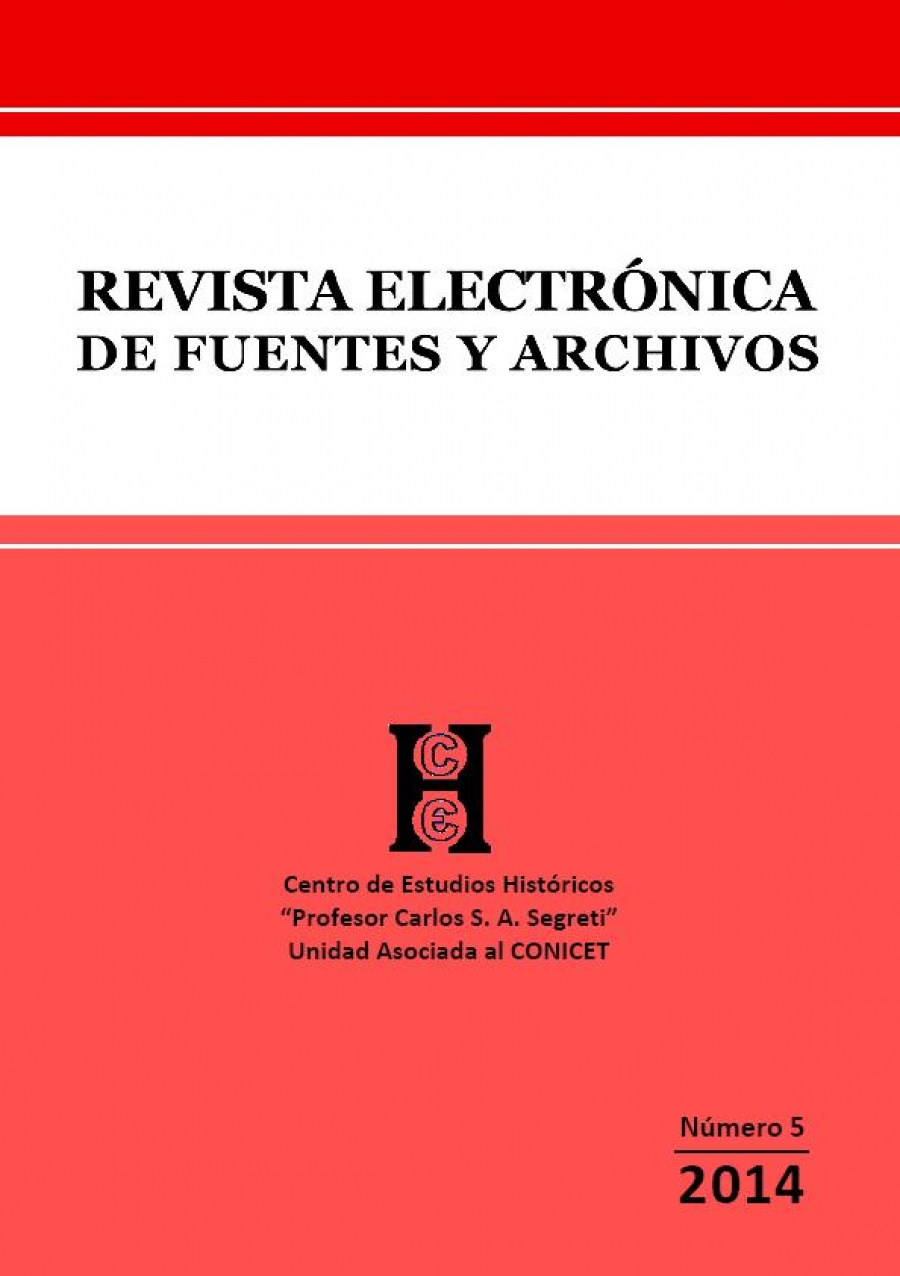Notes for an analysis: photographs of working women in the press during the last military dictatorship
Keywords:
photography, recent history, gender, military dictatorship, workers strikeAbstract
On this article, I try to analize the methodological specificities of the historical research that uses photographic testimonies, based on the case study of the photojournalistic coverage of a workers strike, on the textile factory “Alpargatas”, located on the neighborhood of Barracas (Buenos Aires City), April 1979. The aim is to expose the possible lines of investigation opened by the work with this kind of material; specially, the additional potential that they represent for the gender studies analysis.
Downloads
References
ABOS Álvaro, Las organizaciones sindicales y el poder militar (1976-1983), Buenos Aires, CEAL, 1984.
BARTHES Roland, La cámara lúcida. Nota sobre la fotografía, Barcelona, Paidós, 1990.
BASUALDO Victoria ¨[et. al.], “La clase trabajadora durante la última dictadura militar argentina. 1976-1983. Apuntes para una discusión sobre la resistencia obrera”, Transformaciones económicas y el mundo del trabajo, Jovenes y Memoria: Recordamos para el futuro, disponible en: https://www.comisionporlamemoria.org/archivos/jovenesymemoria/bibliografia_web/ejes/transformaciones_basualdo2.pdf
BASUALDO Victoria, Labor and structural change: Shop-floor organization and militancy in Argentine industrial factories (1943-1983), Columbia University, 2010.
BURKE Peter, Visto y no visto. El uso de la imagen como documento histórico, Barcelona, Crítica, 2001.
EDWARDS Elizabeth, “Photography and the performance of history”, Kronos, núm. 27, 2001, pp. 15-29.
FREUND Gisèle, La fotografía como documento social, Barcelona, Gustavo Gili, 1993.
GAMARNIK Cora, “Imágenes de la dictadura militar. La fotografía de prensa antes, durante y después del golpe de Estado de 1976 en Argentina”, Cora GAMARNIK y Silvia PÉREZ FERNÁNDEZ, Artículos de Investigación sobre Fotografía, Buenos Aires, CMDF, 2011.
HAYES Patricia, “Introduction: Visual genders”, Gender & History, vol. 17, núm. 3.
LAUDANO Claudia, Las mujeres en los discursos militares. 1976-1983, Buenos Aires, Página 12, 1994.
MITIDIERI Gabriela, “Evocando el pasado, construyendo la memoria. Las trabajadoras de Alpargatas Barracas en la huelga de Abril de 1979”, Revista Herramienta, núm. 51, año XVI, 2012, disponible en: http://www.herramienta.com.ar/revista-herramienta-n-51/evocando-el-pasado-construyendo-la-memoria-las-trabajadoras-de-alpargatas-b
MITIDIERI Gabriela, “Participación femenina durante la huelga de Alpargatas Barracas de 1979: experiencias de organización obrera y resistencia durante la última dictadura militar”, XI Jornadas Nacionales de Historia de las Mujeres y VI Congreso Iberoamericano de Estudios de Género, 2012.
PÉROTIN-DUMON Anne, El género en historia, Institute Of Latin American Studies, 2001, disponible en: http://sas-space.sas.ac.uk/242/
POOLE Deborah, Vision, race and modernity: a visual economy of the andean image world, Princeton University Press, 1997.
POZZI Pablo, La oposición obrera a la dictadura (1976-1982), Buenos Aires, Imago Mundi, 2008.
VASALLO Marta, “Militancia y transgresión”, Andrea ANDÚJAR [et. al.], De minifaldas, militancias y revoluciones. Exploraciones sobre los 70 en la Argentina, Buenos Aires, Luxemburgo, 2009.
WEIS Tracey, “Teaching Women’s History with Visual Images”, C. Berkin [et. al.], Clio in the Classroom. A guide for teaching U.S.Women’s History, Oxford University Press, 2009.
Downloads
Published
Issue
Section
License
Copyright (c) 2014 Gabriela Mitidieri

This work is licensed under a Creative Commons Attribution-NonCommercial-ShareAlike 4.0 International License.
Se puede compartir (copiar y redistribuir el material en cualquier medio o formato) y adaptar (remezclar, transformar y construir a partir del material), siempre que: a) se cite la autoría y la fuente original de su publicación (revista, editorial y URL de la obra); b) no se use con fines comerciales; c) la distribución de las obras derivadas se haga con una licencia igual a la que regula la obra original.




















